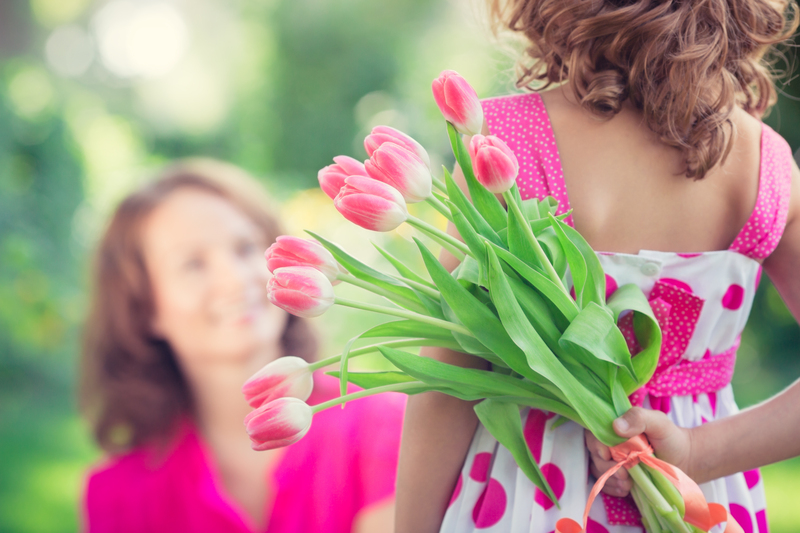Celebrate your birth month with these symbolic blossoms
Posted on 13/08/2025
Celebrate Your Birth Month with These Symbolic Blossoms
Each month of the year carries its own unique flower, symbolizing distinct qualities, stories, and a colorful tradition that dates back centuries. Discover the meaning behind each blossom associated with your birth month and learn creative ways to incorporate these flowers into your celebrations, gifts, and daily life.

Unveiling the Tradition of Birth Month Flowers
The tradition of birth month flowers parallels that of birthstones, with each month dedicated to a recognized flower, each carrying unique symbolism and historical meaning. These symbolic blossoms serve not only as beautiful gifts but also as thoughtful representations of personality, hope, and sentiment.
As you celebrate your birth month, knowing the meaning and origin of your flower can add a personal and meaningful touch to your birthday festivities. Let's take a journey through the floral calendar and explore the captivating charm of each bloom.
Birth Month Blossoms: A Flower for Every Month
- January - Carnation & Snowdrop
- February - Violet & Primrose
- March - Daffodil & Jonquil
- April - Daisy & Sweet Pea
- May - Lily of the Valley & Hawthorn
- June - Rose & Honeysuckle
- July - Larkspur & Water Lily
- August - Gladiolus & Poppy
- September - Aster & Morning Glory
- October - Marigold & Cosmos
- November - Chrysanthemum
- December - Narcissus & Holly
How Were Birth Month Flowers Chosen?
The selection of birth month blossoms has roots in ancient traditions, folklore, and local customs. In the Victorian era, the language of flowers or floriography soared in popularity, assigning distinctive meanings to each bloom.
Floral symbolism offered a coded communication system at a time when direct self-expression was often discouraged. Through the years, these associations have been gathered into the cherished lists we use to celebrate every birth month today.
Meaning and Significance of Each Birth Month Flower
January - Carnation & Snowdrop
- Carnation: Associated with love, admiration, and gratitude, carnations are enduring flowers that brighten even the coldest January days. They symbolize new beginnings, a fitting tribute to the first month of the year.
- Snowdrop: The delicate snowdrop represents hope and rebirth. These resilient little flowers push through the snow, promising spring is on its way.
February - Violet & Primrose
- Violet: Signifying faithfulness, humility, and modesty, violets have been treasured since ancient times. Their rich colors evoke truthfulness and elegance.
- Primrose: Primroses symbolize young love and the joy of renewal, just as spring gently arrives in February.
March - Daffodil & Jonquil
- Daffodil: A symbol of rebirth, renewal, and hope, daffodils usher in the warmth and light of spring. Gifting daffodils is believed to bring happiness and prosperity.
- Jonquil: Closely related to daffodils, jonquils represent sympathy and desire, making them an evocative choice for heartfelt celebrations.
April - Daisy & Sweet Pea
- Daisy: Daisies convey innocence, purity, and newness. They're ideal for celebrating the fresh energy of April.
- Sweet Pea: Sweet peas epitomize blissful pleasure and good wishes, adding an aromatic and enchanting touch to springtime parties.
May - Lily of the Valley & Hawthorn
- Lily of the Valley: With its delicate, bell-shaped blooms, it symbolizes humility, happiness, and a return to joy. This May blossom is also a popular wedding flower.
- Hawthorn: Hawthorn flowers stand for hope and supreme happiness, making them a vibrant celebration of life at the height of spring.
June - Rose & Honeysuckle
- Rose: Perhaps the best-known bloom, roses embody love, honor, and beauty. Different colors convey different messages--red for love, white for purity, and yellow for friendship.
- Honeysuckle: A symbol of happiness and devoted affection, honeysuckle is as sweet-smelling as it is beautiful.
July - Larkspur & Water Lily
- Larkspur: Representing dignity, positivity, and grace, larkspurs make a bold, cheerful statement in any arrangement.
- Water Lily: Water lilies denote purity of heart and clarity, offering a calming, serene presence in July's warmth.
August - Gladiolus & Poppy
- Gladiolus: With its striking vertical blooms, gladiolus symbolizes strength, integrity, and infatuation, reflecting the height of summer's brilliance.
- Poppy: Poppies represent remembrance, imagination, and eternal sleep. Their vibrant colors also convey peace and consolation.
September - Aster & Morning Glory
- Aster: Asters signify wisdom, valor, and faith, gracing September gardens with their star-like blossoms.
- Morning Glory: Morning glories bloom with love and affection, symbolizing the fleeting beauty of a new day.
October - Marigold & Cosmos
- Marigold: Echoing the fiery hues of autumn, marigolds symbolize warmth, creativity, and passion.
- Cosmos: Cosmos stand for harmony, balance, and serenity--a lovely tribute to peace and order.
November - Chrysanthemum
- Chrysanthemum: Known as the 'queen of autumn', this enduring flower embodies joy, loyalty, and optimism. Its variety of colors enhance the dark days of fall.
December - Narcissus & Holly
- Narcissus: Symbolizes hope, good fortune, and respect. Its bright blooms are joyful reminders of new beginnings as the year ends.
- Holly: Holly sprigs, with their festive red berries, represent protection and domestic happiness. They're widely used for holiday decorations.
How to Celebrate Your Birth Month with Symbolic Flowers
1. Personalize Your Birthday Decor
Infuse your party with the colors and scents of your designated birth month blossom. Whether as centerpieces, bouquets, or cake decorations, these flowers add a thoughtful--and stunning--touch to your celebrations.
2. Give Meaningful Gifts
- Bouquets: Present a fresh bouquet of someone's birth month flower for their birthday. It shows thoughtfulness and a deeper understanding of the recipient's personality.
- Floral Jewelry: Many artists craft necklaces, bracelets, and earrings inspired by birth month blossoms. It's a lasting tribute to one's birth month.
- Pressed Flower Art: Create or buy framed artwork featuring these symbolic flowers for a personal keepsake.
3. Indulge in Self-Care with Floral Themes
Incorporate your month's blossom into your beauty or relaxation routine. Think of daisy-infused bath salts, rose petal skincare, or lavender (June alternative) candles for soothing energy. Let your birth month flower inspire your self-care!
4. Plant a Birth Month Garden
Mark each birthday by planting your symbolic flower in your garden or community park. Not only does this tradition beautify your surroundings, but it also roots your personal story in the landscape, year after year.
The Deeper Meaning: Why Celebrating with Birth Month Blossoms Matters
Flowers have always been powerful emblems of sentiment and storytelling. By focusing on the symbolic blossoms associated with our birth months, we gain opportunities to:
- Connect with history: Ancient cultures used flowers in rituals, poetry, and art.
- Express our identity: Each birth flower is associated with personality traits and values.
- Encourage mindfulness and gratitude: Appreciating your birth month's flower deepens your connection to the natural year and its cycles.
- Create lasting memories: Annual floral traditions can become treasured family rituals.
Cultural Insights and Fun Facts about Birth Month Blossoms
- Victorian Era: The language of flowers gained immense popularity during this time, with complex bouquets used to send secret messages.
- Birthdays in Asia: Various Asian cultures assign flowers based on lunar calendars, carrying their own distinct meanings and associations.
- Modern Gifting: Today, birth month flower jewelry and decor have become increasingly popular, making it easy to embrace this tradition in new ways.
Did You Know?
- The rose is the only flower to appear twice in the traditional US list (June and January's alternate bloom).
- Gifting a single daffodil can mean misfortune, but a bouquet brings happiness--be sure to give more than one!
- In some cultures, the marigold is used in both wedding and funeral ceremonies, representing the full cycle of life.

Frequently Asked Questions about Birth Month Flowers
Can I Celebrate with Both Birth Month Blossoms?
Yes! Many months are associated with more than one flower. Feel free to combine these blooms in your celebrations, gifting, and decor for extra meaning and beauty.
Are There Birth Month Flowers for Each Zodiac Sign?
While birth month flowers align with the Gregorian calendar, each zodiac sign also has floral associations. For a more personalized connection, consider blending both in your floral choices.
What if My Birth Month Flower Isn't in Season?
Don't worry! Many florists can source or substitute blooms to match the spirit and color of your symbolic blossom. Consider dried, preserved, or silk alternatives for year-round celebrations.
Conclusion: Embrace the Beauty and Meaning of Your Birth Month Blossom
Your birth month flower does more than simply beautify your birthday--it adds a layer of tradition, symbolism, and personal expression. Whether you display it in bouquets, wear it as jewelry, or plant it as a living tribute, celebrating your birth month with these symbolic blossoms brings a vibrant and heartfelt dimension to your special day.
Take the time to explore the history and significance of your birth month's blooms. Share their stories with friends and family, and let these beautiful flowers inspire memorable and meaningful celebrations for years to come.
Latest Posts
Make Poinsettias Flourish for the Holidays
Celebrate your birth month with these symbolic blossoms
Find Out What Your Birth Flower Says About Your Unique Traits
10 Office Plants Perfect for Those Seeking Low Maintenance
Keep Your Blossoms Fresh with These Simple Preservation Techniques





